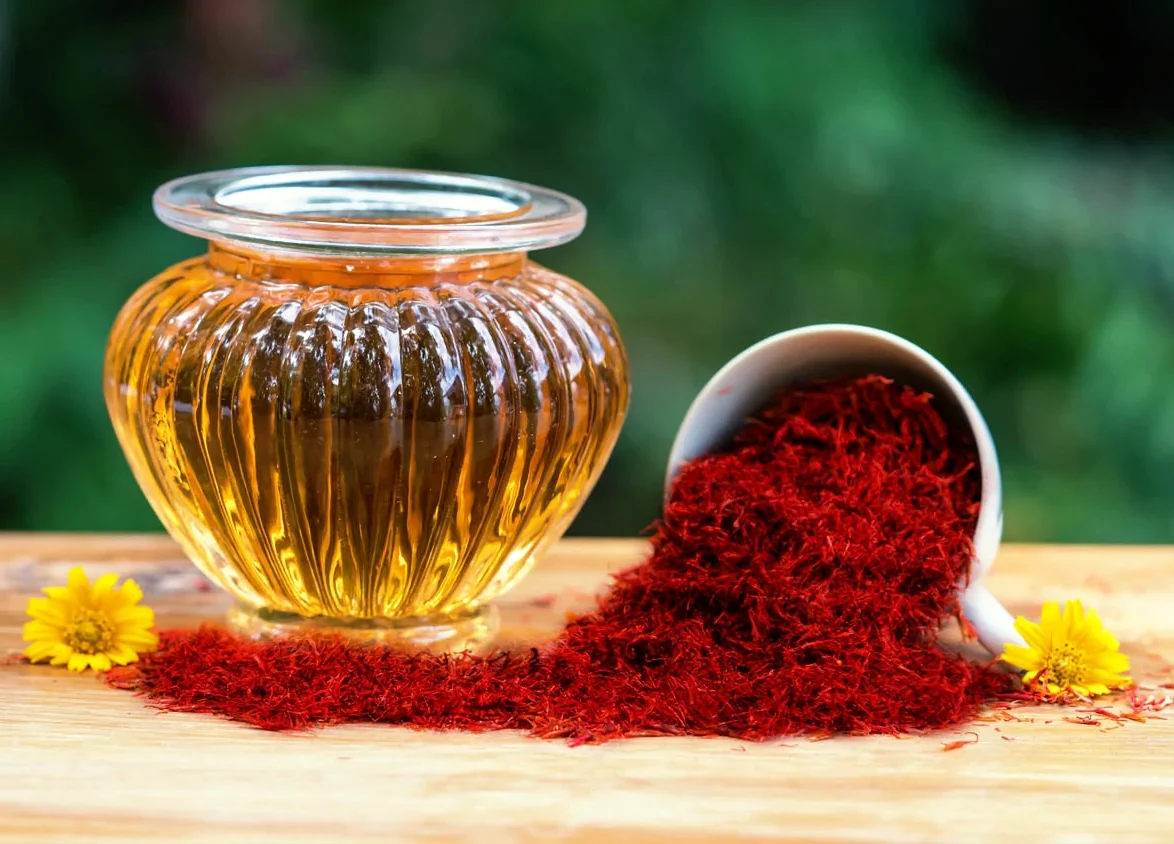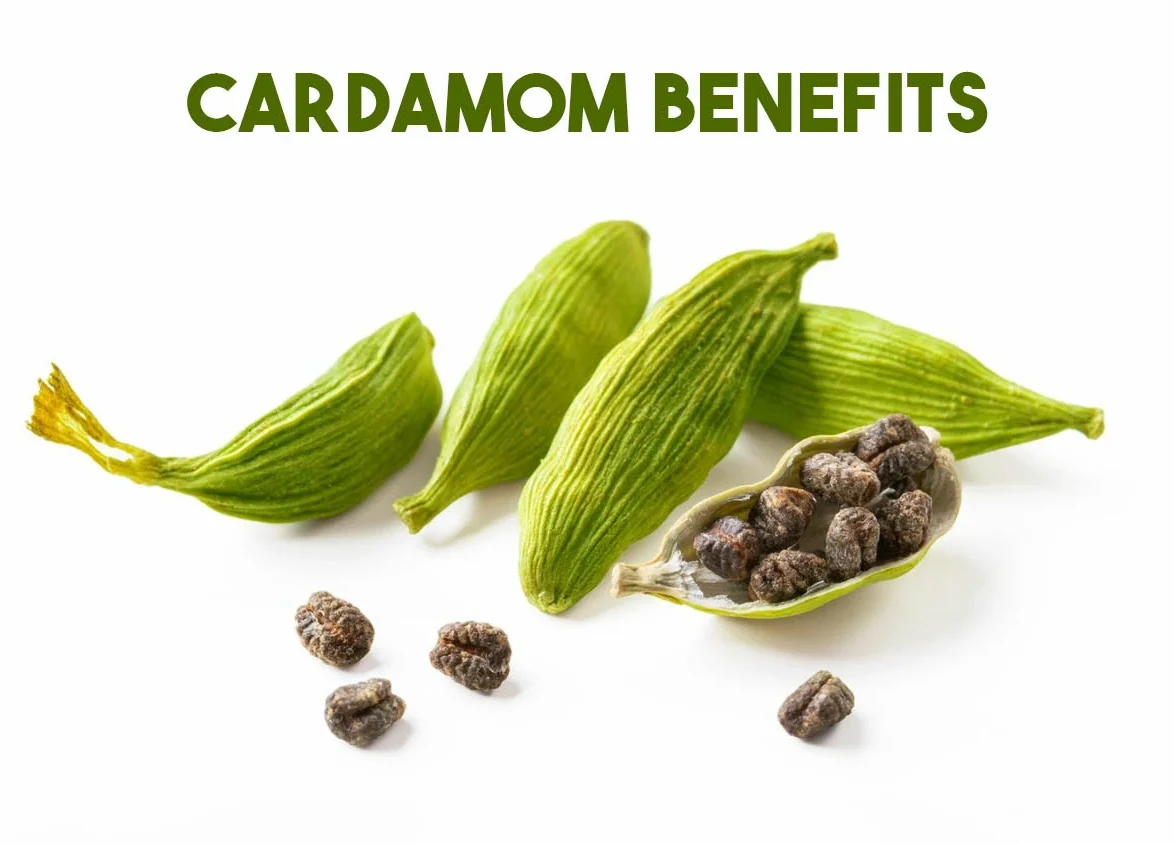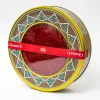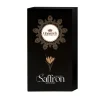Despite the expansion of prosperity and the introduction of various types of beverages, simple tea is still the most popular beverage among Iranian families. Like English breakfast, Iranian Breakfast contains one or two cups of sweet tea (Chai/chaii shirin) “I have to drink some tea to get rid of my headache” is a very common phrase in Iran.
Even though, the Iranian market is open to foreign products like Earl Grey, most Iranians prefer to drink Persian black tea or Irani chai as a morning ritual. Some Iranians are kind of addicted to Chaii, drinking too much to kill themselves! They, instead of drinking 8 cups of water, have 8 to 10 cups of Irani chai a day!
Depending on its type, a cup of freshly brewed Irani chai may taste bitter, earthy, spicy, or aromatic. How did it enter and become common in Iran, and where and how much Iran Chaii is produced? How do you brew Irani chai? and its combination with saffron is what we are going to explain to you here.
How did tea enter Iran?
Tea is grown in parts of the world including India, China, Sri Lanka, Japan, Iran, and other areas. Its leaves are harvested in three seasons of the year (spring, summer, and autumn); Therefore, in most places, there is tea in the form of bushes; But if no harvesting is done, it will gradually rise and become a shrub or tree.
The main part of the tea plant is its leaves, which are transformed into green or black tea in different ways.
The story of tea in Iran
Iranians (at least the upper class of the society or the kings) got acquainted with tea from the Safavid period. At that time, the general drink of the people was coffee, and the term Ghahveh Khaneh (coffee house) was coined in Iran since then. The interesting thing is that now you can’t find coffee in these traditional coffee houses anymore and you have to go to coffee shops to have a cup of coffee. Considering this issue, some people started to call these monumental houses “chaii khaneh” (tea houses).
Tea was widely spread in the Qajar Dynasty period and mainly during the time of Naser al-Din Shah. The high consumption of tea in Iranian society was such that it made the governments think of cultivating it in Iran.
First, an Isfahani businessman named Haj Mohammad Hossein Isfahani started tea cultivation in several parts of Iran in 1261 or 62 Shamsi by bringing tea seeds, but despite his success, his business did not develop.
Then Mohammad Mirza Kashif al-Sultaneh, who was sent to India with the position of Consul General of Iran, managed to bring a large number of tea seeds and seedlings to Iran and planted them in Lahijan in 1900.
Tea cultivation was finally developed and reached about 600 hectares in 1931, and in 1933, the first tea factory was opened in Lahijan.
Ratification of the sugar and tea monopoly law in June 1926, and the law of the ten-year wavier of tea cultivators from paying taxes led the tea industry to flourish and the area under cultivation in 1939 reached about 4000 hectares. 14 tea processing factories were reported at that time.
From 1941 to 1950 we saw, the tea industry in Iran regains previous prosperity from 13291950 and reached its peak around 1333.
The current situation of tea in Iran
Today, according to the certificate of tea growers in the Tea Organization, the cultivated area of tea is about 26,000 hectares in more than 900 villages in the cities of Soumesara, Foman, Shaft, Rasht, Lahijan, Astana Ashrafieh, Siahkol, Langrod, Rudsar and Amlesh in Gilan province and cities Ramsar and Tankabon to the vicinity of Chalus in Mazandaran province, for a length of about 203 km. About 55,000 households are engaged in the cultivation of this crop and 6,000 people. In total, they are working in 182 tea-making and packaging factories.
About 30% of tea gardens are built in Jalga and the rest are located in the foothills of northern Iran.
The per capita consumption of tea in Iran has increased from about 1.2 kg in 1978 to about 1.5 kg in 2017and the total consumption of tea has increased from about 41 thousand tons to 126 thousand tons in 2020. The amount of domestic tea production provides almost a quarter of the country’s needs, and the rest is provided by imports.
What are the benefits of black tea?
Too much to count. Let’s review some of them. The black tea
1. is full of antioxidants
The presence of antioxidants in food is one of the main factors for confirming health. Fortunately, this substance is present in black tea. Antioxidants contribute to overall health, reduce cellular damage, lower cholesterol and blood sugar levels, and aid in fat loss.
The best way to absorb antioxidants is through eating and drinking food. Now that’s the case, why don’t we drink a glass of tea?
2.Helps heart health
Black tea contains another group of antioxidants called Flavonoids, which are beneficial for heart health. Flavonoids can also be found in vegetables, fruits, and dark chocolate.
Regular consumption of Flavonoids may help reduce many risk factors for heart disease, such as high blood pressure, high cholesterol, high triglycerides, and obesity.
A large review of studies found that for every cup of tea consumed daily, the risk of death from heart disease decreases by 4%, the risk of heart attack and other cardiovascular events by 2%, and the risk of stroke by 4%.
3. reduces LDL cholesterol
LDL and HDL are two types of lipoproteins that carry cholesterol throughout the body. Too much LDL in the body can increase the risk of heart disease and stroke. This cholesterol is also called bad cholesterol. Studies have shown that black tea may help lower LDL levels.
4. Improves intestinal health
The type of bacteria in your gut plays an important role in your digestive health. Some bacteria in the gut are good for your health and some are bad.
If there are beneficial bacteria in your gut, they make you less prone to diseases such as inflammatory bowel disease, type 2 diabetes, cardiovascular disease, obesity, or even gastrointestinal cancers.
One of the benefits of black tea is the polyphenols in it, which promote the growth of good bacteria and inhibit the growth of bad bacteria.
5.helps to decrease blood pressure
As you know, high blood pressure can increase the risk of heart and kidney failure, stroke, vision loss, and heart attacks. Fortunately, you can lower your blood pressure by changing your diet and lifestyle.
Studies have shown that regular consumption of tea helps to reduce blood pressure. As a result, if you have this problem, don’t forget to drink tea during the day, in addition to the medicines prescribed by your specialist doctor. Just be sure to consult your doctor that drinking tea does not interfere with your medications.
6.helps to reduce the risk of stroke
Stroke is the second leading cause of death worldwide. A stroke occurs when a blood vessel in the brain is blocked or ruptured, and a heart attack occurs when the arteries that supply blood to the heart become blocked.
Fortunately, lifestyle changes such as eating low-fat and healthy foods, regular physical activity, controlling blood pressure, and not smoking can help reduce the risk of stroke.
As we mentioned, black tea helps to reduce blood pressure; As a result, it reduces the risk of heart attack and stroke. Studies have shown that the risk of stroke is lower for people who are genetically predisposed to drink more tea per day.
7.Reduces blood sugar levels
Elevated blood sugar levels may increase the risk of diseases such as type 2 diabetes, obesity, cardiovascular disease, kidney failure, and depression. When you consume a sweet food or drink, the pancreas releases a hormone called insulin.
Insulin allows sugar to enter cells, including muscle and liver cells, to be stored as energy or glycogen. When the body needs to use energy, another hormone called glucagon is released to help the body break down glycogen and release energy.
If you eat more sugary foods than your body has room for glycogen storage, the extra sugar will be stored as fat.
Research shows that drinking unsweetened black tea may help lower blood sugar after a meal or snack and also increase the release of the hormone insulin in the body.
8. is anti-cancer
As if the benefits of black tea are endless! This drink contains polyphenols that may help fight cancer cells in the body.
Please note that consuming black tea alone does not cure cancer in any way, and in the face of cancer, one’s diet must be completely under the supervision of a specialist doctor. However, some research shows that this form of tea may have an effect in reducing the growth of cancer cells.
Benefits of tea 9) Improves concentration
Black tea contains caffeine and an amino acid called L-theanine, which can improve alertness and concentration. L-theanine increases alpha activity in the brain, resulting in better relaxation and concentration.
This may be why many people report more sustained energy after drinking tea than other caffeinated beverages such as coffee. So if you’re looking to boost your energy and focus with less caffeine, choose black tea instead of other high-caffeine beverages.
How many types of Iranian tea are there?
Iran is considered one of the largest producers of tea, and its popularity and high demand, as well as the different tastes of its customers, have made Iranian farmers offer a variety of products.
The most popular Iranian types of this product are as follows:
- Sargol (Picked up from the top part of the plant)
- Momtaz (excellent/premium)
- Ghalam (slender)
- Baruti (Gunpowder-like)
- Shekasteh (broken/ground)
Now let’s take a look at the differences between these types of teas and how to brew them:
The best, look for Sargol
Sargol type is the best Iranian brewed plant and that’s why its price is higher than other models. Sargol is separated from the upper part of this plant and is the most delicate and freshest leaf. This type of product has small and twisted leaves and has the highest quality in terms of aroma and color.
The time required to brew Sargol is less than other models. Besides, due to the high quality of Sargol, a small amount of it spreads the right color in boiling water.
Premium Iranian tea
Momtaz tea is the lower leaves of the plant that are categorized as the second-grade but in fact, is almost similar to Sargol. The main difference in appearance with Sargol is in its leaves. Because the leaves of the premium type are picked from the lower part of the head, they are kind of bigger. Premium tea, if properly brewed, would be only slightly different from the Sargol type in terms of aroma and taste.
The way to brew premium tea is to pour a small amount of tea into a teapot put it on a samovar or kettle for about 10 to 15 minutes and wait for the tea to brew. Make sure that this plant should not be boiled at all. Because boiled tea has a bad taste and darkens the color of tea, consuming it could cause heartache or kind of vomiting for some people.
Ghalam tea
Due to being separated from the lower parts of the plant, the infused plant has a larger appearance and is considered one of the late-brewing teas. Therefore, if you are one of those people who like light tea and mild aroma, it is better to use this type of product.
If you want it to have a good color, you should pour a lot of it into the teapot while brewing. After this, it takes half an hour to forty minutes for this fragrant plant to appear. When this product is harvested in the field, some small stems are usually separated from it, and the special taste of this type is due to the presence of those stems.
Baruti tea
Baruti (Gunpowder-like) or Kalleh-Murcheii (ant head-like) spreads its color so quickly, and for this reason, this product is used to produce tea bags and tea, but at the same time, it is an easier object to be adulterated.
So, if you decide to have a hot and tasty drink for urgent situations that is ready quickly, Baruti tea is the best option.
Shekasteh tea
As its name suggests, broken tea is produced and marketed using the broken leaves of this plant. Always when harvesting, some leaves get damaged and lose their original appearance. For this reason, these leaves are used to produce broken tea. In this type of product, there are different types of leaves, so it is impossible to determine the exact time to brew it. However, the approximate time to brew the broken type is about 15 to 20 minutes.
The Cult of brewing Iranian tea?
To enjoy the exotic taste of Irani chai, try to follow these tips;
- First of all, you should know that the water used to brew Iranian tea has a great effect on the taste of the tea.
This is why the taste of this hot drink is different in different cities and regions. But the most suitable water for this is the one without chlorine. Try to use only fresh water, i.e. avoid the water that has been boiled several times. Because this water loses its oxygen it lowers the quality of tea. - Forget the green tea model of brewing as it needs a different water temperature for brewing.
Black tea leaves must be brewed in very hot water at a temperature of a little under 100 degrees, but green tea needs a temperature of 80 degrees because of its thin leaves and does not need to be placed in a teapot and on heat. If you pour some of it into a glass of boiling water and cover the container for a few minutes, the green tea will brew and be ready to drink. - The amount of brewed herb that is poured into the teapot should be proportional to the capacity and space of the container.
In the case of Iranian models, it is better to pour this plant less than half a teapot and wash it once with cold water. - Finally, after brewing the tea, cover it so that it gets more flavor.
The best container for brewing Iranian tea
One of the things that is very important in brewing this plant is the type of container we use. It is interesting to know that one of the best ways to brew Iranian tea is to use a Chinese teapot. Because Pyrex and unbreakable dishes and glass tea makers lower their quality. Because of this, this plant brews well in a Chinese teapot and you can enjoy its unique aroma and taste of tea.
Also, ceramic and porcelain teapots, glass teapots can retain heat for a longer period, compared to glass teapots.
Amazing saffron tea
Necessary ingredients for 4 people :
- Ground saffron ¼ teaspoon
- Black tea 1 teaspoon
- 2 glasses of water
- Green cardamom pods
- Rose water or Rose petals (optional)
How to prepare saffron tea step by step
To prepare a cup of saffron tea, first pour water into a kettle and heat until it reaches boiling point. At the same time, you can put dry tea in a teapot without water on the kettle so that when you pour the boiling water, the teapot and the tea will be hot.
After the water bubbles in the kettle, pour some boiling water into the teapot. Now, it’s time to add the ground saffron to the teapot reduce the flame under the kettle, and let the teapot stay on the opening of the kettle for about 15 to 20 minutes to infuse the tea inside.
You can pour some tea into a glass and immediately put the tea inside the glass back into the teapot. This makes the tea completely release its color and aroma.
If you are looking to increase the taste and relaxation, you can put two or three cardamom seeds and some dried rosemary leaves inside the teapot before pouring boiling water. If you don’t have flower leaves, you can add two tablespoons of rose water after pouring boiling water into the teapot.
Finally, according to personal taste, pour some tea into the cup using a strainer and add the necessary amount of boiling water. Your freshly brewed saffron tea is ready, and you can enjoy it with Sugar Cubes (a candy-like form made of sugar not poured into tea, but put in your mouth just before drinking your tea, used mostly only in Iran and recently in Turkey), brown or white sugar or all kinds of chocolate or candies.
Properties of saffron tea for mouth and teeth
Drinking saffron tea is beneficial for health for many reasons. One of these properties is its positive effect on oral and dental health. The polyphenols in saffron tea destroy the bacteria in the mouth and, as a result, prevent bad breath and tooth decay.
Saffron tea, the miracle of menstruation
Another unique property of saffron tea is its positive effect on menstruation. Saffron tea with beetroot is one of the best options for women who are on their period. By relaxing the smooth muscles of the uterus, saffron can be effective in reducing menstrual pain.
Saffron tea, is a stimulant for concentration and better sleep
Tea, like coffee, is a rich source of caffeine and can make you feel energetic. In addition, tea also contains an amino acid that increases alpha activity in the brain, which itself increases concentration and alertness.
Glowing for skin and face
Saffron tea is one of the drinks that has many benefits for the skin and face. With its anti-inflammatory properties, saffron can prevent skin dryness, eczema, and skin death. Also, black tea is very useful for skin infections and spots.
Good for weight loss
According to the latest studies of researchers, saffron tea can be effective in losing weight. Due to its high caffeine content, saffron tea can increase the body’s metabolism and thus help lose weight. Of course, to lose weight, you have to consider many points such as exercise and healthy eating, and just drinking tea is not enough.
Positive effects on premenstrual syndrome (PMS)
With its ability to treat menstrual cramps and premenstrual syndrome (PMS), saffron can help improve the condition of women. In addition, the use of saffron to increase interest in sex is also common.
A drink to increase your vigor and vitality
As you surely know, saffron is known as a happy plant. Meanwhile, black tea can also increase the body’s energy due to the presence of caffeine. These two ingredients together can make a happy potion.
The effect of saffron tea on the health of the digestive and urinary system
In addition to the fact that saffron tea can eliminate stomach bloating and help digestion, it is also known as a diuretic drink, which can help improve bladder and kidney function.
Conclusion
To make a long story short, just place a couple of pinches of loose tea and one pinch of rose petals and saffron in the teapot. Add boiling water. Cover and let steep for about 15 to 20 minutes. Persians will usually place the teapot on top of the kettle simmering on the stove to keep the tea warm.
Ghaaneh brand will help you to bye the fresh and best quality saffron to enjoy your tea much more. You need only Some hot water to take the advantage of magical benefits of saffron and Iranian tea.
FAQs
What is the best type of Iranian tea?
Sargol (the loose tea leaves picked up from the top part of the tea plant) is the best tea you can find in Iran, sometimes at twice the price of regular tea.
What kind of additive we can add to Iranian black tea?
Saffron Rose petals(rose water) and cardamon are the most common additives Iranians and Middle Eastern people use to add to their teas.
How long does it take to brew Iran chai?
You have to be patient and wait around 20 minutes, as you are brewing a tea with no colorant like most other types of tea coming from Sri Lanka or India.












the blog was very helpful and well written!
I actually went out my way and made a saffron tea, i usually don’t drink tea but boy oh boy i have changed my mind!
I am not much of a tea drinker myself, but the Persian way sure is one of the best ones.